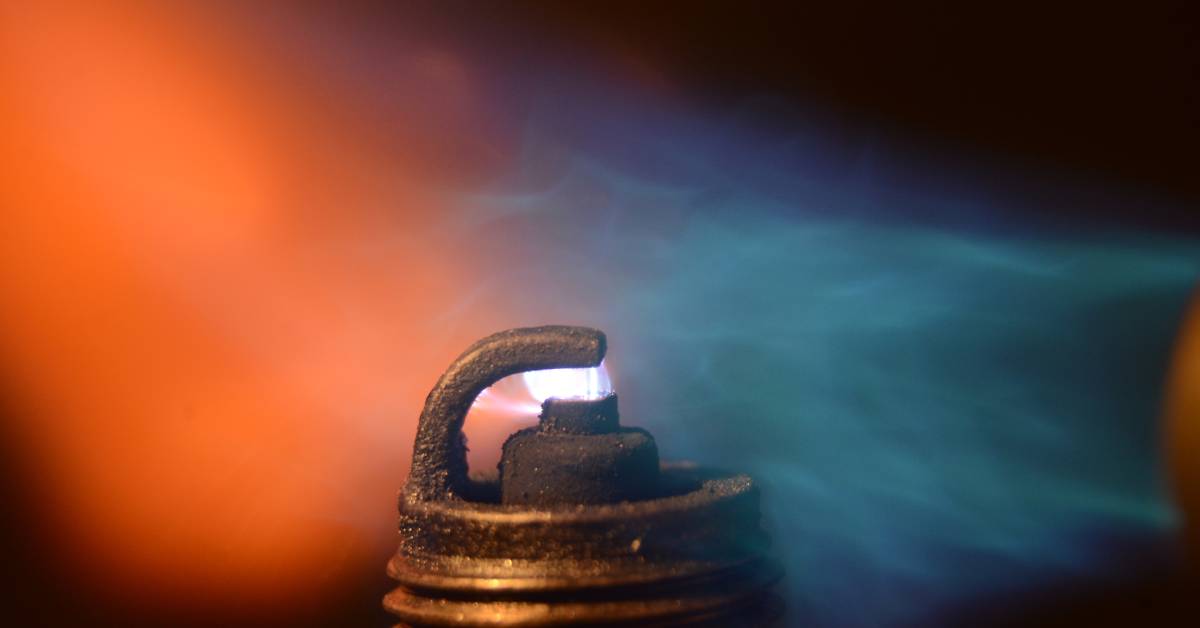
In the world of internal combustion engines, whether they be for cars, motorcycles, watercraft, or even heavy-duty equipment, the spark plugs play an essential role. They provide, quite literally, the spark that ignites the air-fuel mixture within the engine’s cylinders and makes it go. However, not every spark plug is the same.
While many internal combustion engines come with conventional spark plugs, there are other options. There are also high-performance spark plugs for cars, motorbikes, watercraft, four-wheelers, and more. Keep reading to learn more as we break down conventional spark plugs vs. high-performance spark plugs to find out which is ideal for your vehicle or equipment.
Understanding Conventional Spark Plugs
First, we’ll begin with the basics of the most common spark plugs. Conventional spark plugs have been the standard in ignition systems for decades.
These plugs use a simple design featuring a central electrode typically made of copper, nickel, or a similar alloy. When the ignition coil sends an electrical current through the spark plug, it jumps the gap between the center and side electrodes, creating a spark that ignites the air-fuel mixture.
Pros and Cons of Conventional Plugs
Despite their widespread use, conventional spark plugs come with both advantages and drawbacks. One of the primary benefits is their affordability. They are easy to find and cost-effective, making them a popular choice for everyday vehicles.
However, their design also means they wear out faster and may require more frequent replacement compared to their high-performance counterparts. While they’re okay for standard operations, they won’t go above and beyond to deliver greater performance, longevity, or efficiency.
Applications for Conventional Plugs
Conventional spark plugs perform well in standard conditions and are suitable for most vehicles. If you drive a car primarily for commuting or casual use, conventional spark plugs offer reliable performance without breaking the bank.
However, for those driving and operating in exceptional conditions, where greater performance and durability are crucial, conventional spark plugs will not perform as well and are more likely to degrade faster.
Exploring High-Performance Spark Plugs
High-performance spark plugs meet the demands of modern, high-powered engines. These plugs feature advanced materials like platinum or iridium, which boast higher melting points and better conductivity than copper or nickel. This not only enhances their durability but also allows for a more consistent and powerful spark.

Pros and Cons of High-Performance Spark Plugs
The advantages of high-performance spark plugs go beyond just durability. They can significantly improve engine efficiency, leading to better throttle response, smoother idling, and even increased fuel economy. High-performance plugs are particularly beneficial in high-compression and forced induction engines, where a stronger spark is necessary to ignite the air-fuel mixture effectively.
The drawbacks to high-performance spark plugs are mainly related to the cost. While not exceptionally expensive, high-performance spark plugs cost more than the average plug.
Applications for High-Performance Plugs
When contemplating an upgrade to high-performance spark plugs, it's essential to evaluate what you’ll use it for and the engine specifications. If you’ve got a high-performance car or want to ensure the longevity of your watercraft, high-performance plugs would be a great fit.
Conventional vs. High-Performance: Response and Efficiency
Now we get down to the critical factors involved in comparing conventional spark plugs with high-performance spark plugs. High-performance spark plugs, leveraging advanced materials like platinum and iridium, generate a more robust and consistent spark, enabling better ignition of the air-fuel mixture. This results in enhanced throttle response, smoother idling, and improved fuel efficiency.
Conventional spark plugs, typically made from copper and nickel alloys, produce an adequate spark for standard operating conditions but fall short in high-demand scenarios. Their susceptibility to wear and shorter lifespan can lead to reduced performance over time. Therefore, for engines requiring optimal performance, particularly those operating under high compression or forced induction, high-performance spark plugs offer a marked advantage over their conventional counterparts.
Conventional vs. High-Performance: Durability
In terms of durability, high-performance spark plugs significantly outshine their conventional counterparts. Constructed with robust materials such as platinum and iridium, high-performance spark plugs withstand extreme temperatures and resist the wear and erosion caused by prolonged high-compression firing conditions. This makes them exceptionally durable, often lasting two to three times longer than conventional spark plugs.
These traditional materials, while adequate for regular driving conditions, tend to degrade faster and require more frequent replacements due to their lower melting points and susceptibility to electrode erosion. So, while the cost of high-performance spark plugs may be higher, the buyer’s dollar stretches further with high-performance plugs because they last longer and perform better.
Conventional vs. High-Performance: Fuel Efficiency
Fuel efficiency is a critical factor for any vehicle owner, and the type of spark plug can have a notable impact on how efficiently an engine consumes fuel. High-performance spark plugs, with their superior construction and advanced materials like platinum and iridium, create a more reliable and consistent spark. This leads to a more complete combustion of the air-fuel mixture, thus optimizing fuel consumption and improving overall engine efficiency.
Conventional spark plugs produce a sufficient spark but don’t facilitate as thorough of a combustion process. This can result in incomplete burning of the fuel, leading to lower fuel efficiency. Consequently, while high-performance spark plugs may come at a higher initial cost, their potential to enhance fuel economy can result in long-term savings and improved performance.
Installation Tips for DIY Enthusiasts
If you’re convinced that it’s time to upgrade your vehicle to high-performance spark plugs, great! One of the ways you can offset the increased cost of an aftermarket performance spark plug is by installing it yourself.
First, you’ll need to gather the necessary tools:
- Spark plug socket
- Ratchet
- Torque wrench
- Gapping tool
- A spark plug boot puller (useful to safely remove old plugs without damaging ignition wires)

Ensure your engine is cool before starting. Carefully remove the ignition wires from the old spark plugs, using the boot puller if needed. Use the spark plug socket and ratchet to unscrew the old plugs, turning counterclockwise until free.
Check and set the gap of the new spark plugs according to your vehicle's specifications using the gapping tool. Screw the new plugs into the engine by hand to avoid cross-threading, then tighten with the torque wrench to the manufacturer's recommended setting.
Find High-Performance Spark Plugs for Your Vehicle at E3 Spark Plugs!
We hope our detailed breakdown has shown the greater capability and value of high-performance spark plugs than their conventional counterparts. If you’d like to upgrade your car, motorcycle, or truck, we can help!
Our wide inventory of performance spark plugs includes plugs for all kinds of vehicles and internal combustion engines, from PWC spark plugs to gardening equipment like chainsaws and lawnmowers. Browse our inventory to view our advanced aftermarket spark plugs for various vehicles and equipment and contact our staff if you have any questions or would like to learn more about E3 Spark Plugs!







